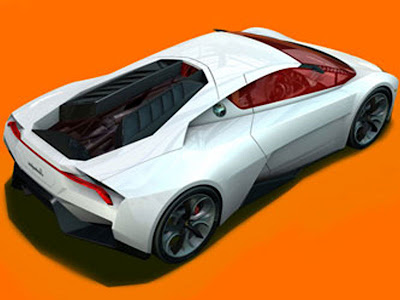Lancia Stratos Sport Cars Concept
In November 2010, forty years after the Stratos’ presentation at the Turin Motor Show, the New Stratos was publicly presented for the first time at the Paul Ricard Circuit – the legend returns. The legendary Lancia Stratos HF was without a doubt the most spectacular and successful rally car of the 70s. With its thrilling lines and uncompromising design tailored to rally use, the Lancia Stratos not only single-handedly rewrote the history of rallying, it won a permanent place in the hearts of its countless fans with its dramatic performance on the world's asphalt and gravel tracks - a performance which included three successive world championship titles.
The latest Lancia Stratos Sport Cars Concept not but single-handed rewrote the account of baiting, it advanced a perm place in the affections of its innumerous fans on its dramatic production on the world’s mineral pitch and gravel tracks – a execution which admitted 3 sequential world backup titles. The centrepiece of the fresh 2010 Lancia Stratos are the 4.3L, light alloy V8 locomotive of the Ferrari F430 Scuderia, which speeds the high tech sports car to a accelerate of 200 kilometres per hour in 9.7 seconds.

Lancia Stratos Sport Cars Concept
The goal for the development of the Lancia Stratos HF's successor was to once again create a mid-engine sports car with a short wheelbase, low weight and superior agility. Just as the Lancia Stratos, with its Ferrari Dino V6 engine, was nevertheless a distinct sports car in its own right, the New Lancia Stratos Sport Cars Concept is also a distinct development, using components of the Ferrari 430 Scuderia. Almost all of these components have been modified and, as necessary, customized to their new purpose. However, it should also be emphasized that the Ferrari Scuderia already sets the standard amongst the current super sports cars and, as such, provides an excellent basis for further development.
The high execution locomotive which absorbs its intake air by the roof spoiler’s face openings, back-number equipped on afresh control social unit and a high-performance exhaust by Capristo, including multiplex and sports car exhaust; it delivers 540 horsepower and provides a torque of across 500 Land of Enchantment.
Lancia Stratos Sport Cars Concept
The aluminum chassis was shortened by 20cm and welded to a roll cage made of 40mm-thick FIA FE45 steel. This method significantly increases rigidity, and this, combined with the shifting of the center of gravity towards the front, provides the basis for the vehicle’s extraordinary handling characteristics. Both the body – which is 33cm shorter than the Scuderia’s – and the interior are constructed entirely of carbon fiber and aluminum. All of the body components of the shell and interior are made of visible carbon. This places especially high demands on the quality of the processing, which was accomplished by Re Fraschini.
Since the first blurry pictures of New Lancia Stratos Sport Cars Concept appeared on the Internet in the summer of 2010, sports car enthusiasts and motorsport fans from around the world have been waiting impatiently for confirmation of whether the successor to the legendary Lancia Stratos really drives as impressively fast and with as much agility as appearances would suggest.

Lancia Stratos Sport Cars Concept
Finally, the steering has been converted to electro-hydraulic, the new smaller carbon steering wheel displays the exact shift points via differently colored LEDs and the paddle shifters are from the Ferrari 430 racecar. The New Lancia Stratos Sport Cars Concept, like the racing version of its predecessor, has been extensively geared – down to every last detail – towards lightweight design and performance. Not surprisingly, the specification sheet was therefore extremely ambitious in this regard as well.

Lancia Stratos Sport Cars Concept












































